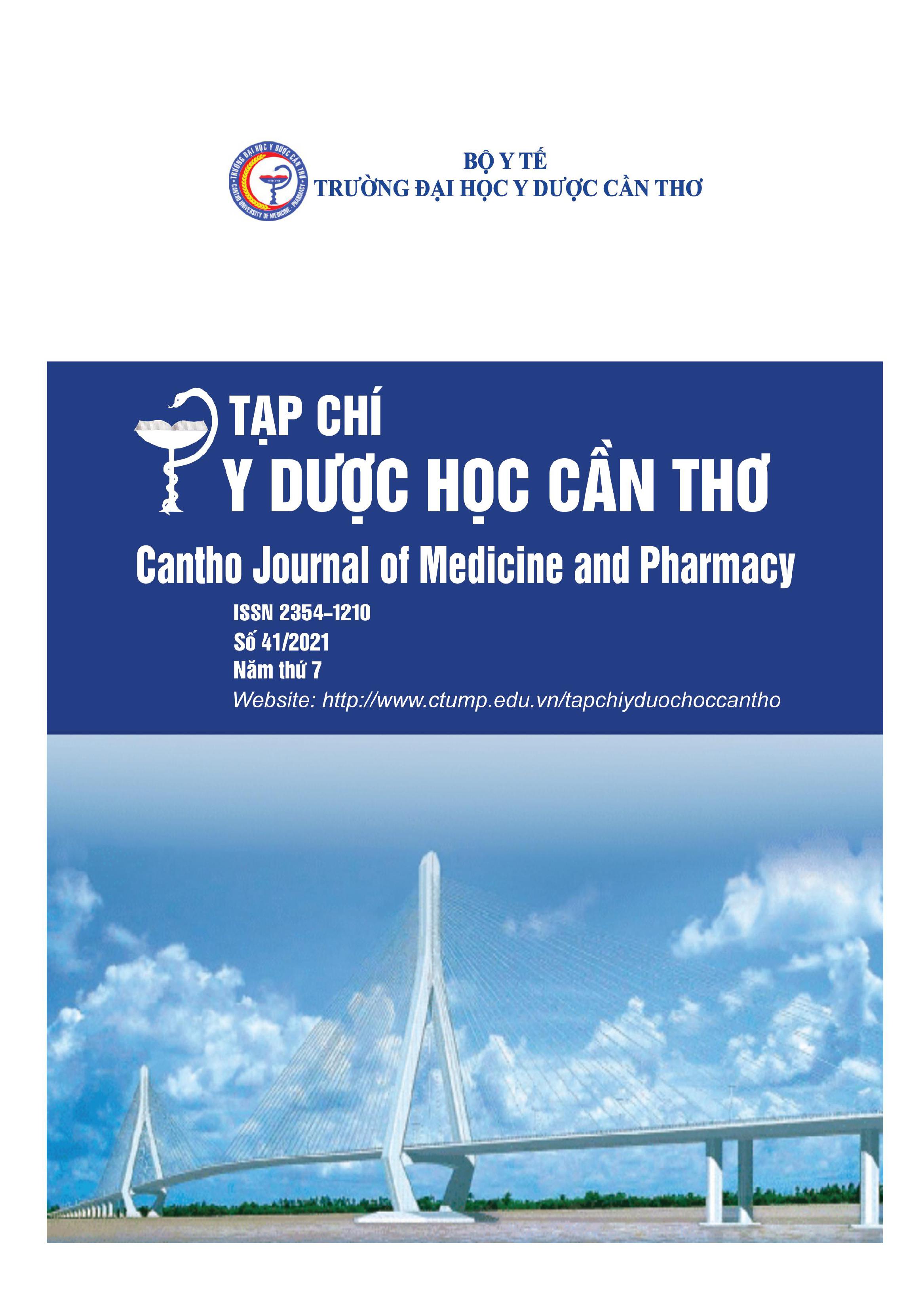ANALYSIS THE ROLE OF qSOFA, SOFA IN PROSPECTS OF PERSONAL PERFORMANCE BACTEREMIA AND BACTERIAL INFECTION EMERGENRY DEPARTMENT ACCESSORIES
Main Article Content
Abstract
Background: Every year, millions of people worldwide suffer from sepsis. The Third International Consensus Definitions for Sepsis and Septic Shock (2016) recommending the use of qSOFA in early screening for sepsis, a new screening system to assess the multi-organ failure grading mechanism. Objectives: Describe some common characteristics and determine the predictive value of mortality of the qSOFA and SOFA scales. Materials and methods: All patients > 16 years old who entered the Emergency Department of An Giang Central General Hospital from January 2020 to August 2020 were diagnosed with sepsis and septic shock. Research method is descriptive studies. Results: In patients with severe sepsis and septic shock the area under the curve of qSOFA to predict mortality is 0.917 (CI: 95%; 0.86-0.96) cut point ≥ 2, Sensitivity = 96.88%, Specificity = 81.43% compare with area under the curve of SOFA is 0.884 (CI: 95%; 0.81-0.95) cut point ≥ 7, Sensitivity = 68.75%, Specificity = 91.43%. Conclusion: The qSOFA score may be an effective tool for predicting mortality better than the SOFA score in the Emergency Department for patients with sepsis and septic shock.
Article Details
Keywords
Death, septicemia and septic shock, quick SOFA
References
2. Hoàng Văn Quang (2009). “Nghiên cứu đặc điểm lâm sàng của suy đa tạng và các yếu tố tiên lượng tử vong của bệnh nhân sốc nhiễm khuẩn”. Y học thực hành, TP.Hồ Chí Minh (694), số 12.
3. Nguyễn Ngọc Rạng (2012). Thiết kế nghiên cứu và thống kê Y học, Nhà xuất bản Y học, TP.Hồ Chí Minh, tr.242.
4. Nguyễn Thanh Sử và cộng sự (2019). “Giá trị dự báo qSOFA với tử vong và nhập hồi sức của bệnh nhân nhiễm khuẩn tại Khoa Cấp cứu Bệnh viện Nhân dân Gia Định”, Tạp chí Y học TP. Hồ Chí Minh.
5. Phạm Thị Ngọc Thảo và cộng sự (2011). “Ứng dụng thang điểm sofa trong tiên lượng tử vong bệnh nhân nhiễm trùng huyết nặng tại khoa hồi sức cấp cứu”, Tạp chí Y học TP.Hồ Chí Minh, Tập 15, Phụ bản 2.
6. Nguyễn Văn Tuấn (2008). Y học thực chứng, Nhà xuất bản Y học, TP.Hồ Chí Minh, tr.75. 7. Acharya S P, Pradhan B, Marhatta M N (2007). “Application of the Sequential Organ Failure Assessment (SOFA) score in predicting outcome in ICU patients with SIRS”, Kathmandu Univ Med J (KUMJ). 5(4), pp.475-483.
8. Dellinger R.P, Levy M.M, Rhodes A, Annae D et al. (2016). “Surviving Sepsis Campaign:
international guidelines for management of severe sepsis and septic shock”, Intensive Care Med. 39(2), pp.165-228.
9. Jiang J, Jin Yang, Jin Mei et al. (2018). “Head-to-head comparison of qSOFA and SIRS criteria in predicting the mortality of infected patients in the emergency department: a metaanalysis”, Scand J Trauma Resusc Emerg Med. 26(1), pp.56.
10. Kristina E Rudd, ChW. Seymour, AR. Alui et al. (2018). “Association of the quick sequential (sepsis-related) organ failure assessment (qSOFA) score with excess hospital mortality in adults with suspected infection in low- and middle-income countries”, JAMA. 319(21), pp.2202-2211.
11. Muhammad Akbar Baiga et al. (2018). “Comparison of qSOFA and SOFA score for predicting mortality in severe sepsis and septic shock patients in the emergency department of a low middle income country”, Turkish Journal of Emergency Medicine.18(4), pp.148-151.
12. Raith EP et al. (2017). “Prognostic Accuracy of the SOFA Score, SIRS Criteria, and qSOFA Score for In-Hospital Mortality Among Adults with Suspected Infection Admitted to the
Intensive Care Unit”, JAMA. 317(3), pp.290-300.
13. Singer M, Deutschman CS et al. (2016). “The Third International Consensus Definitions for Sepsis and Septic Shock (Sepsis-3)”, JAMA. 315, pp.801-810.


